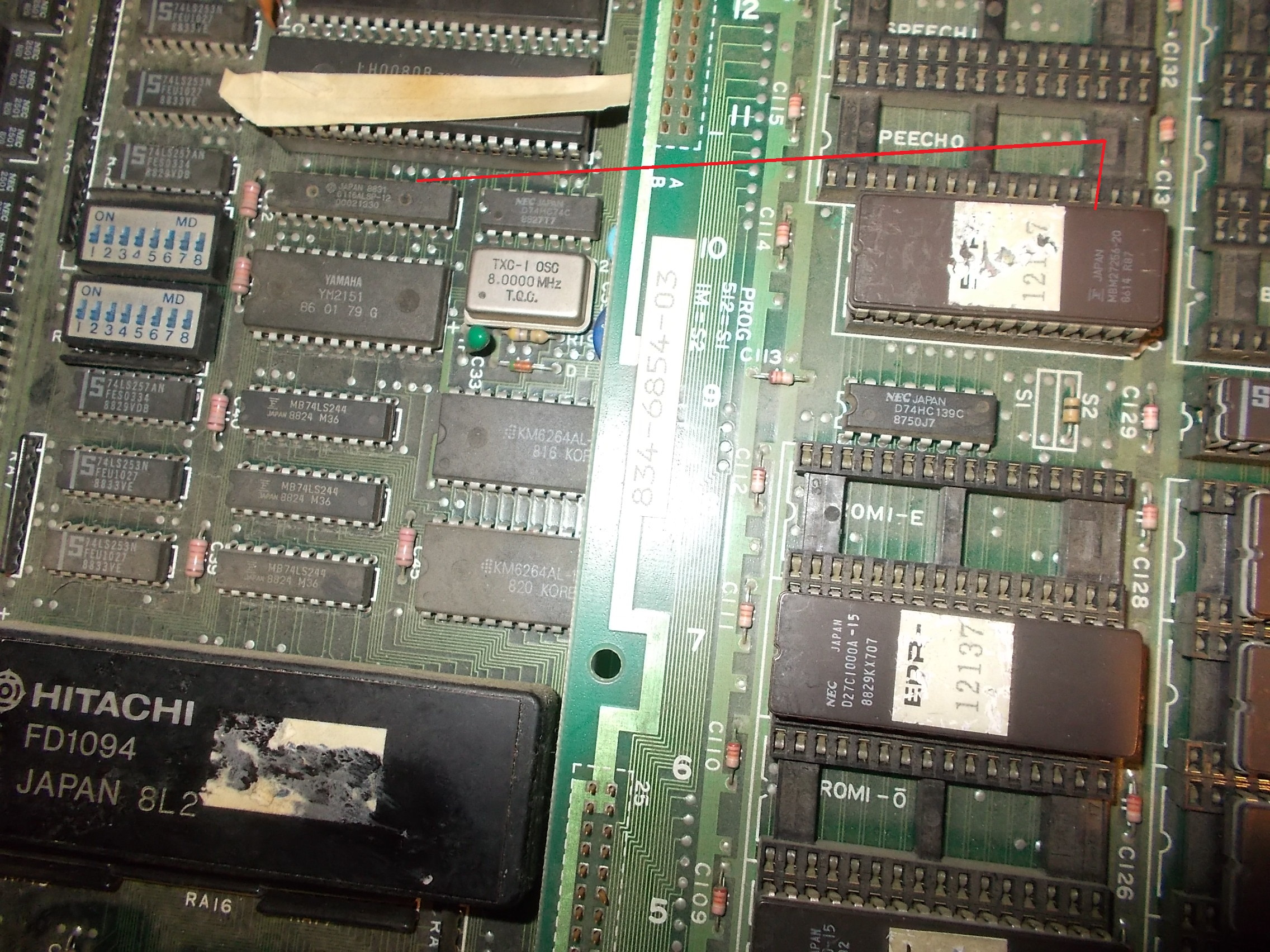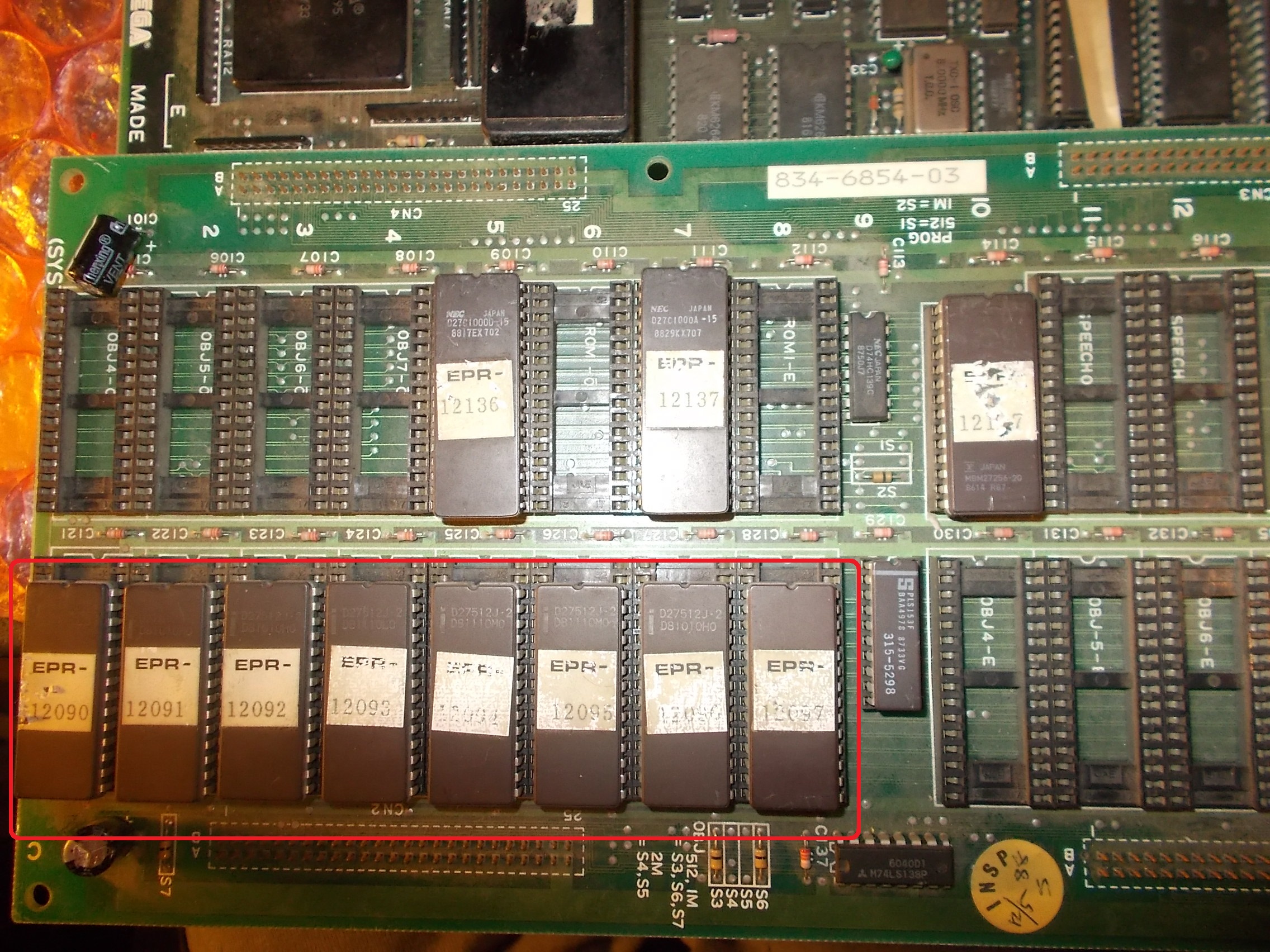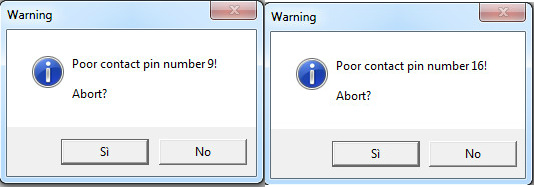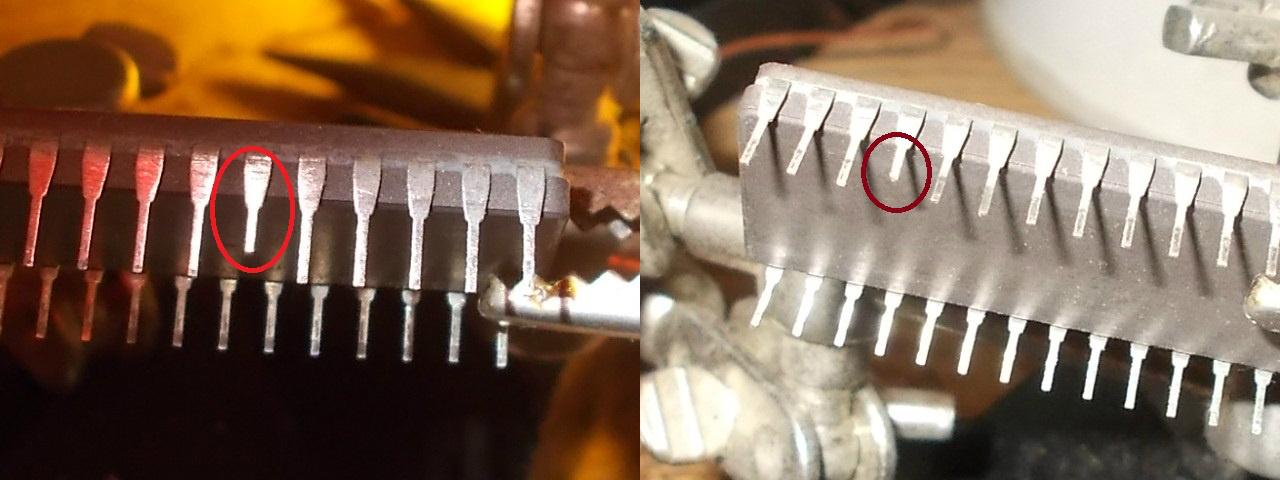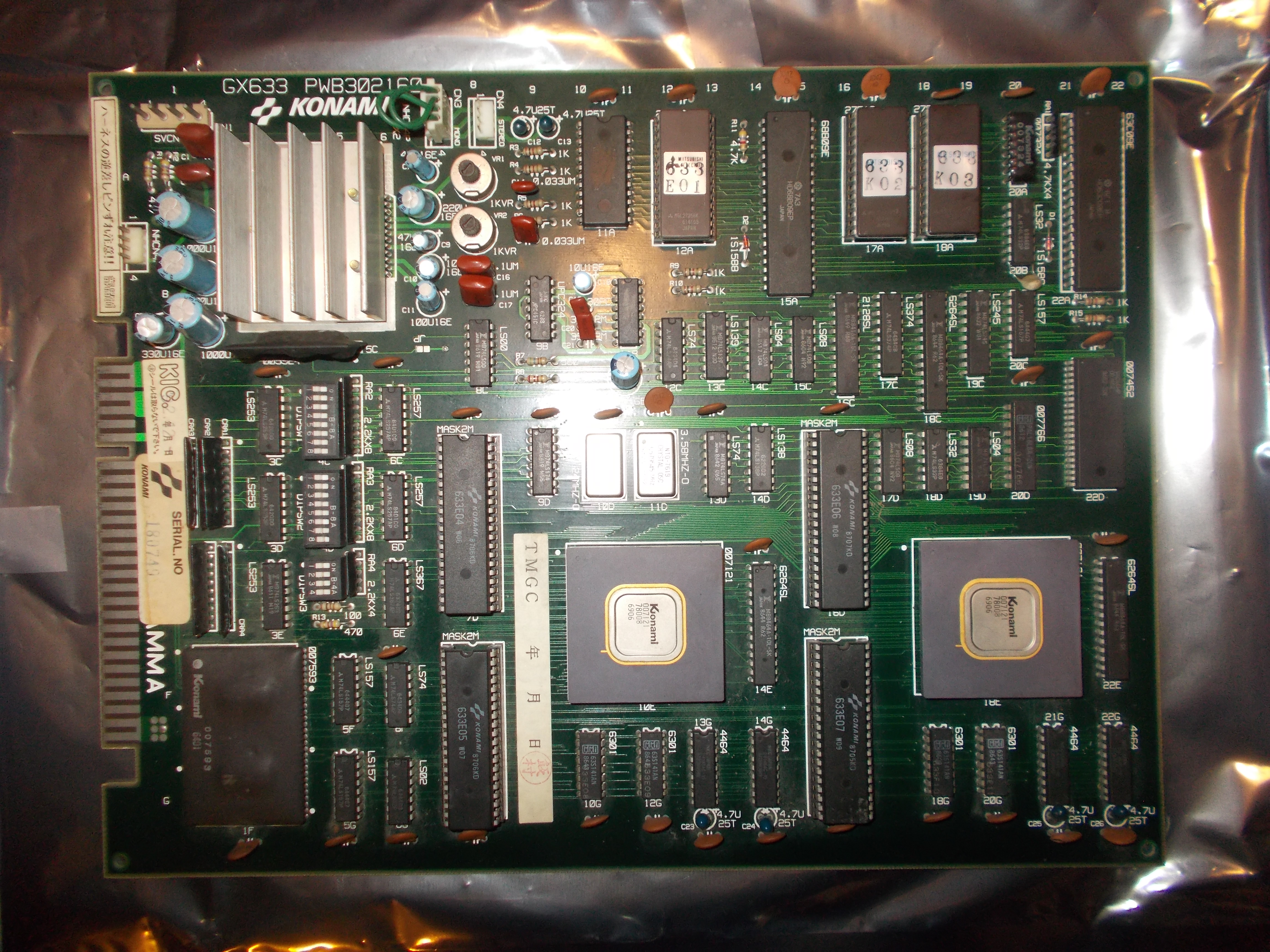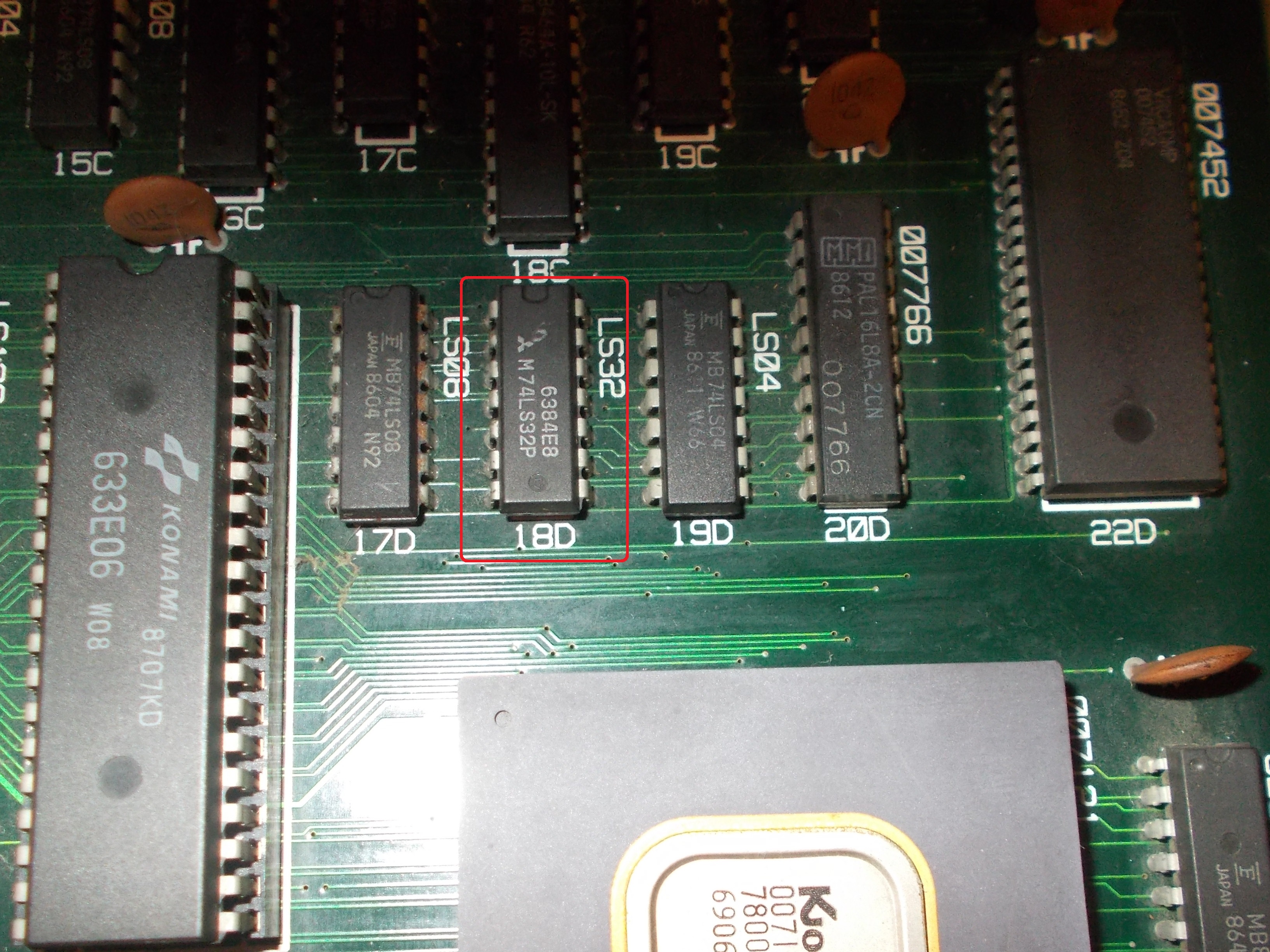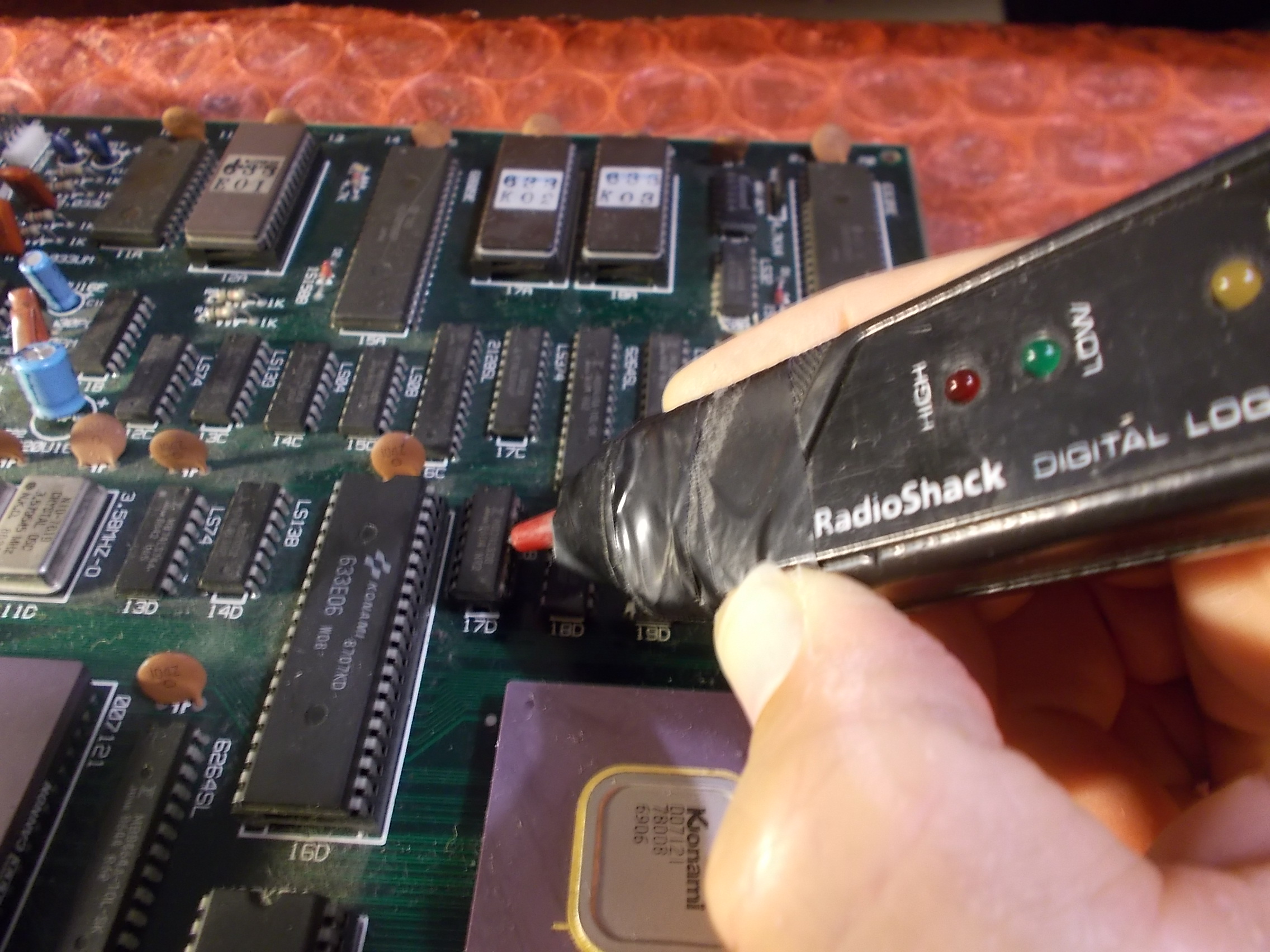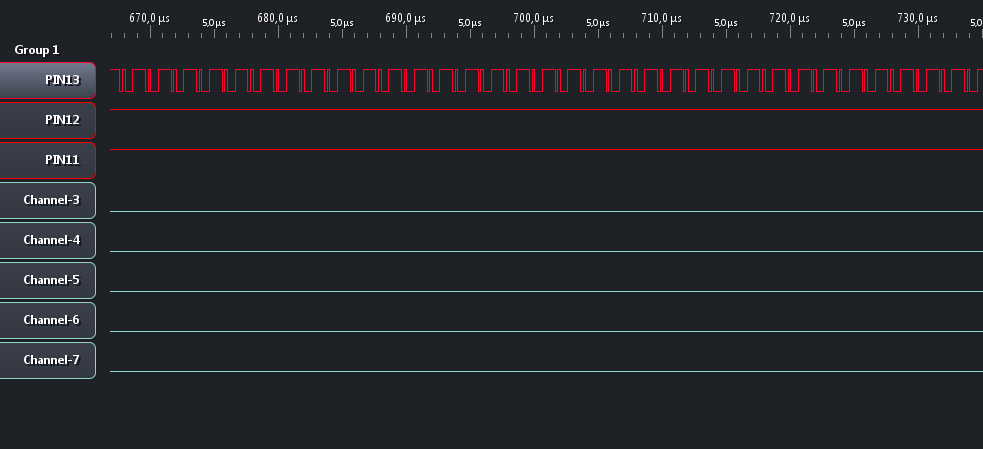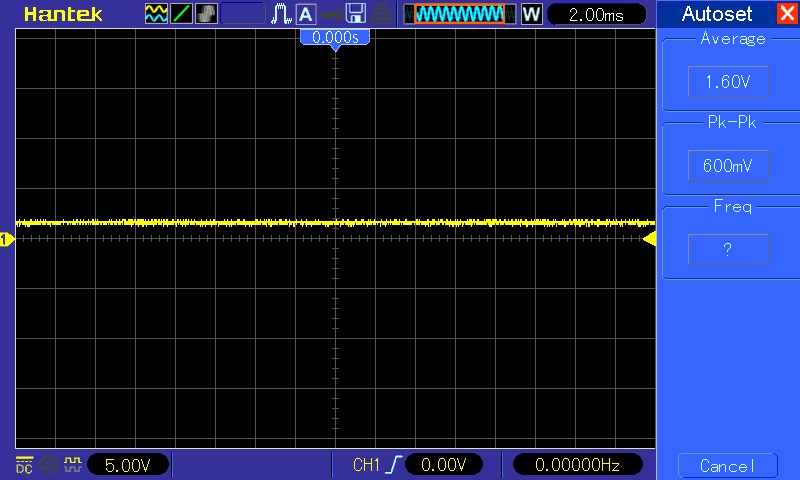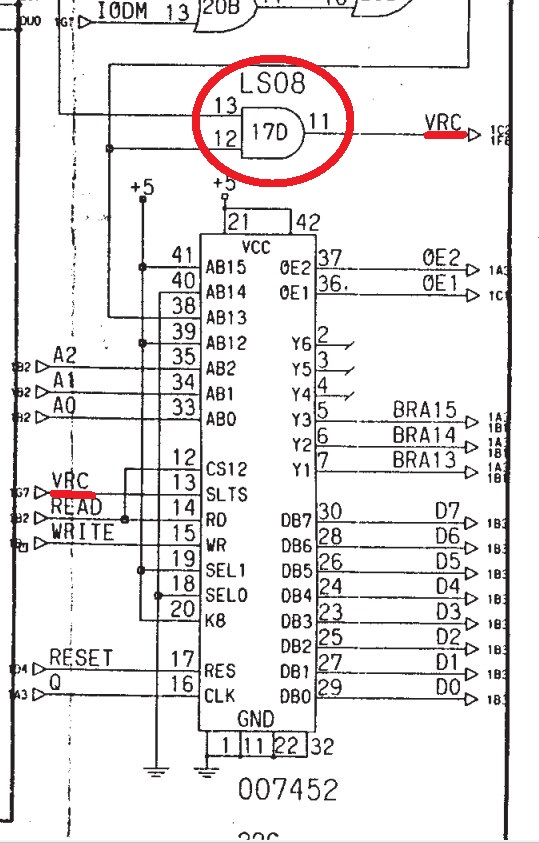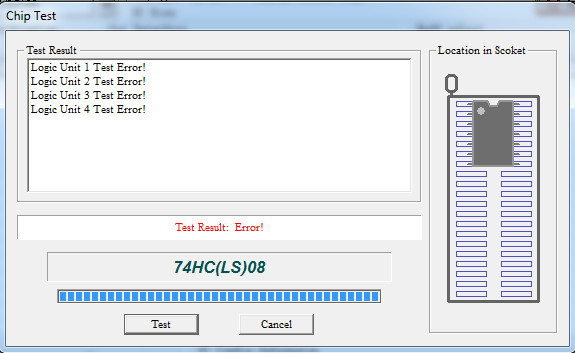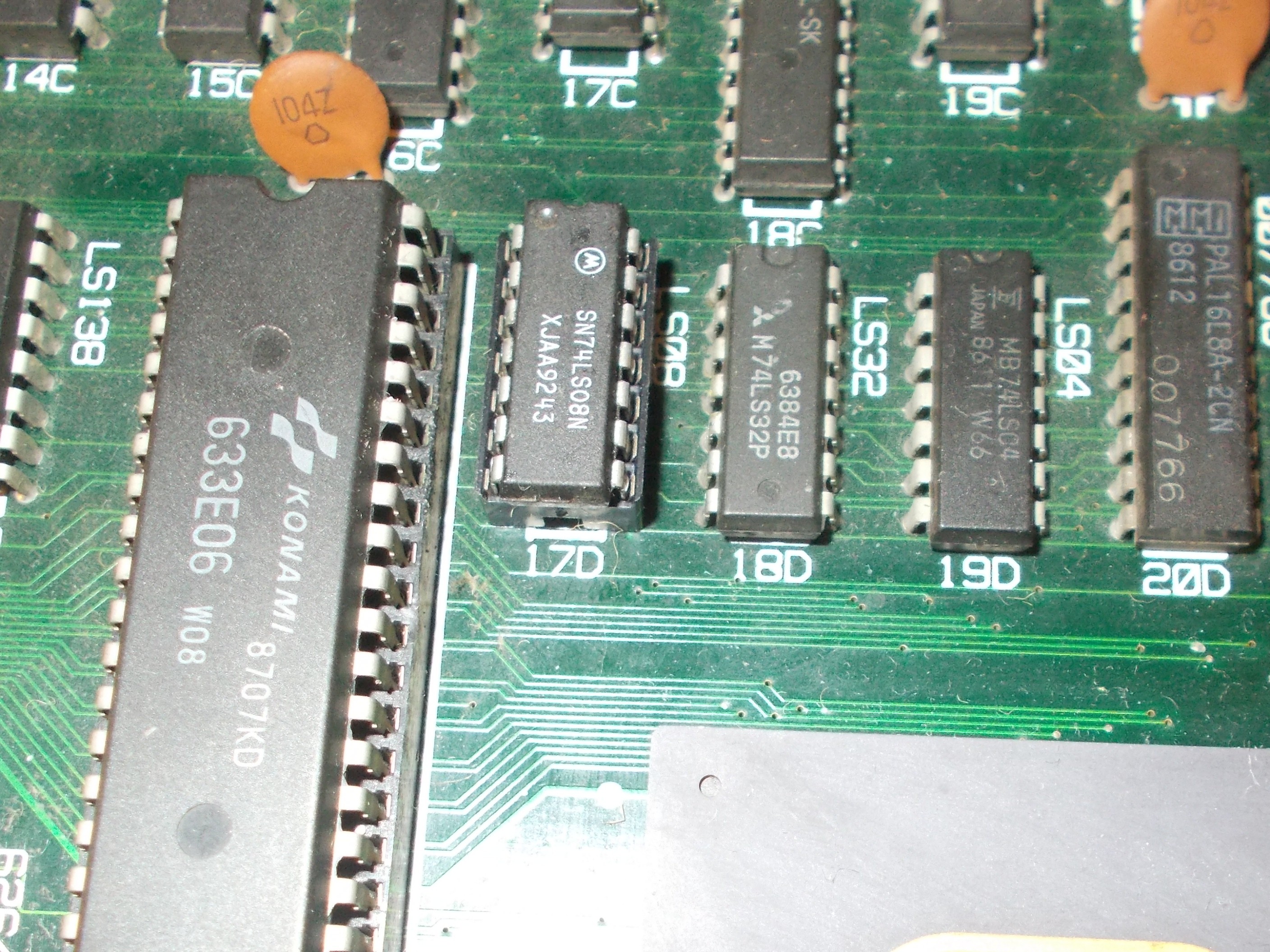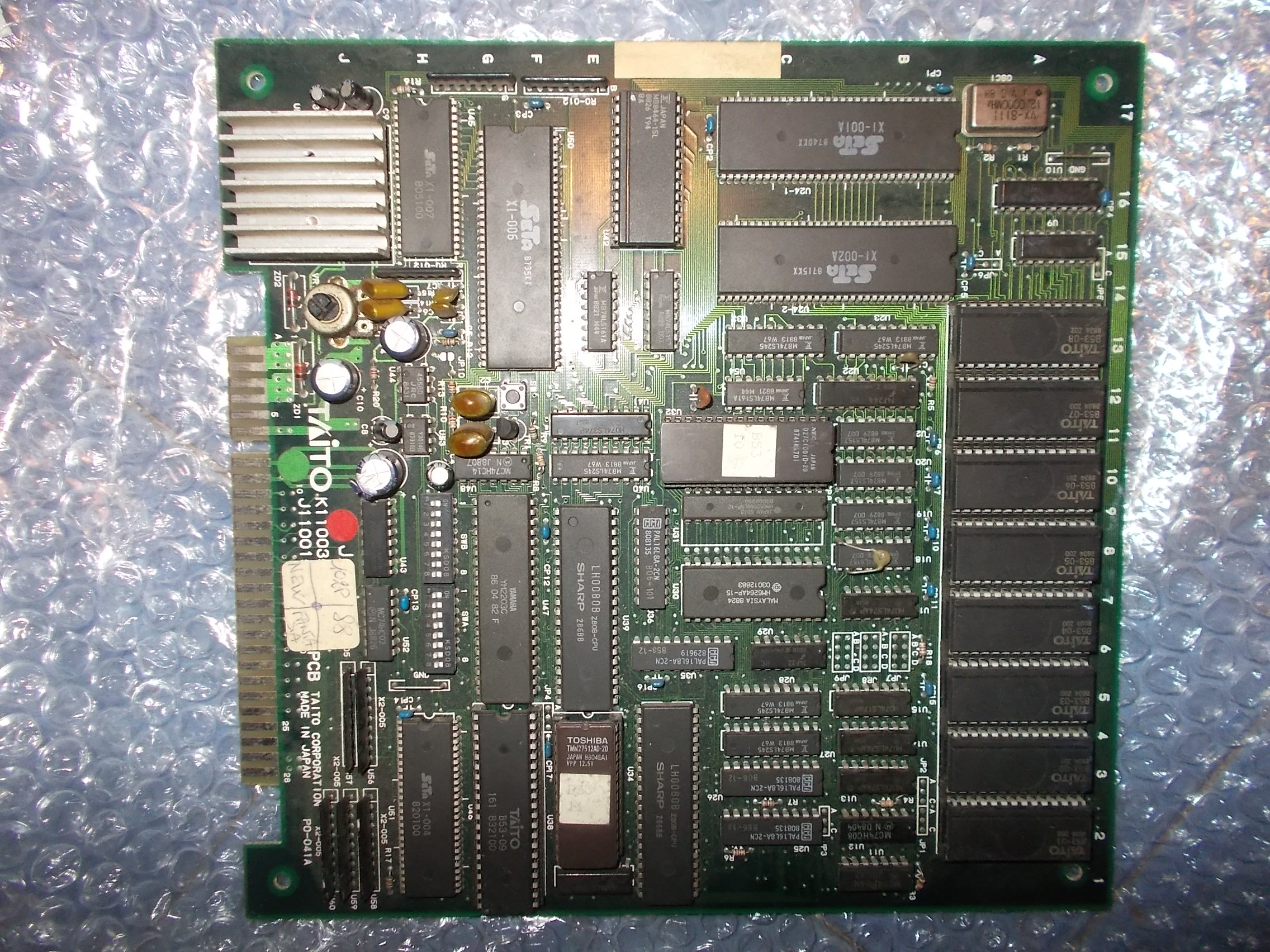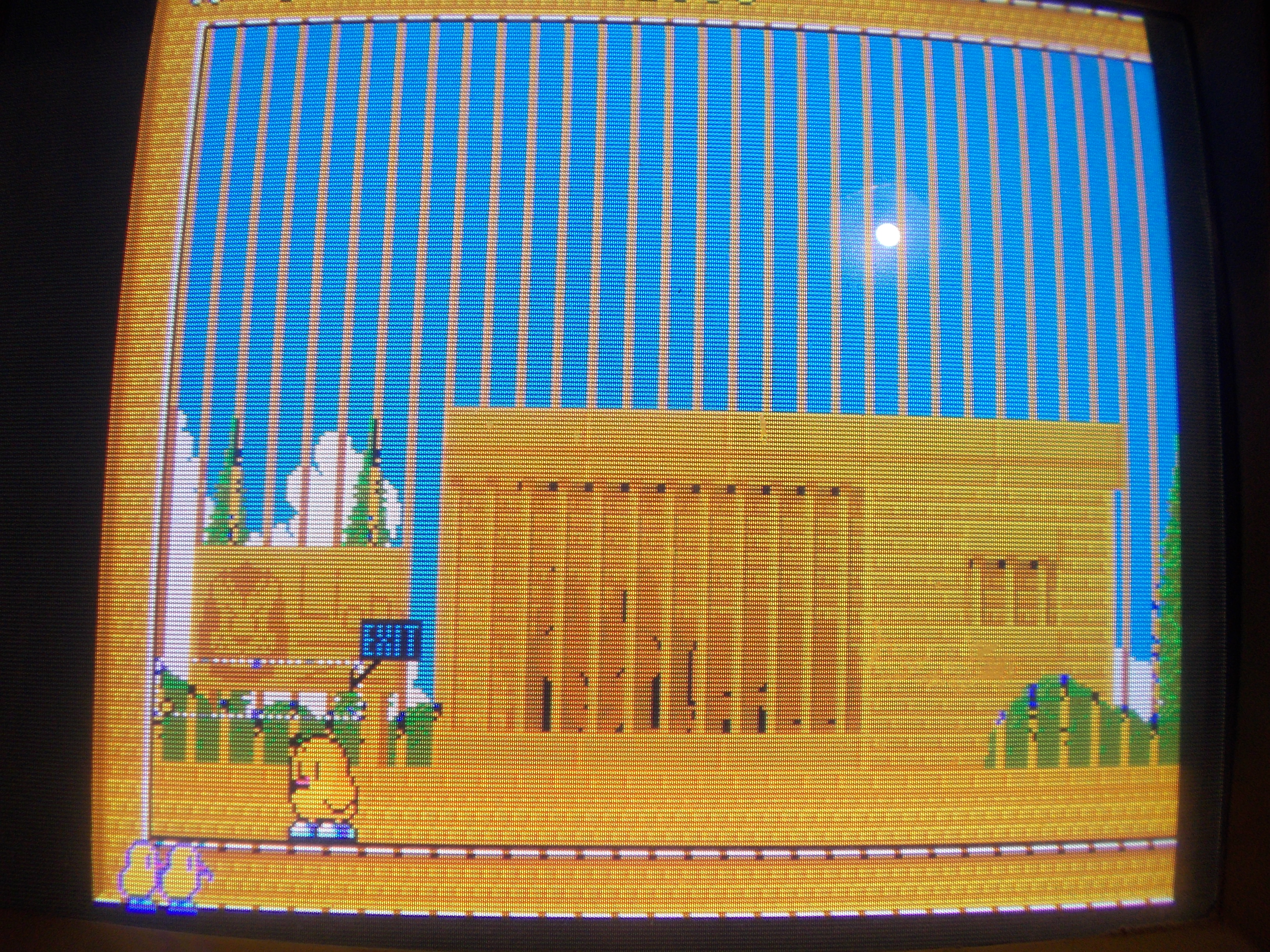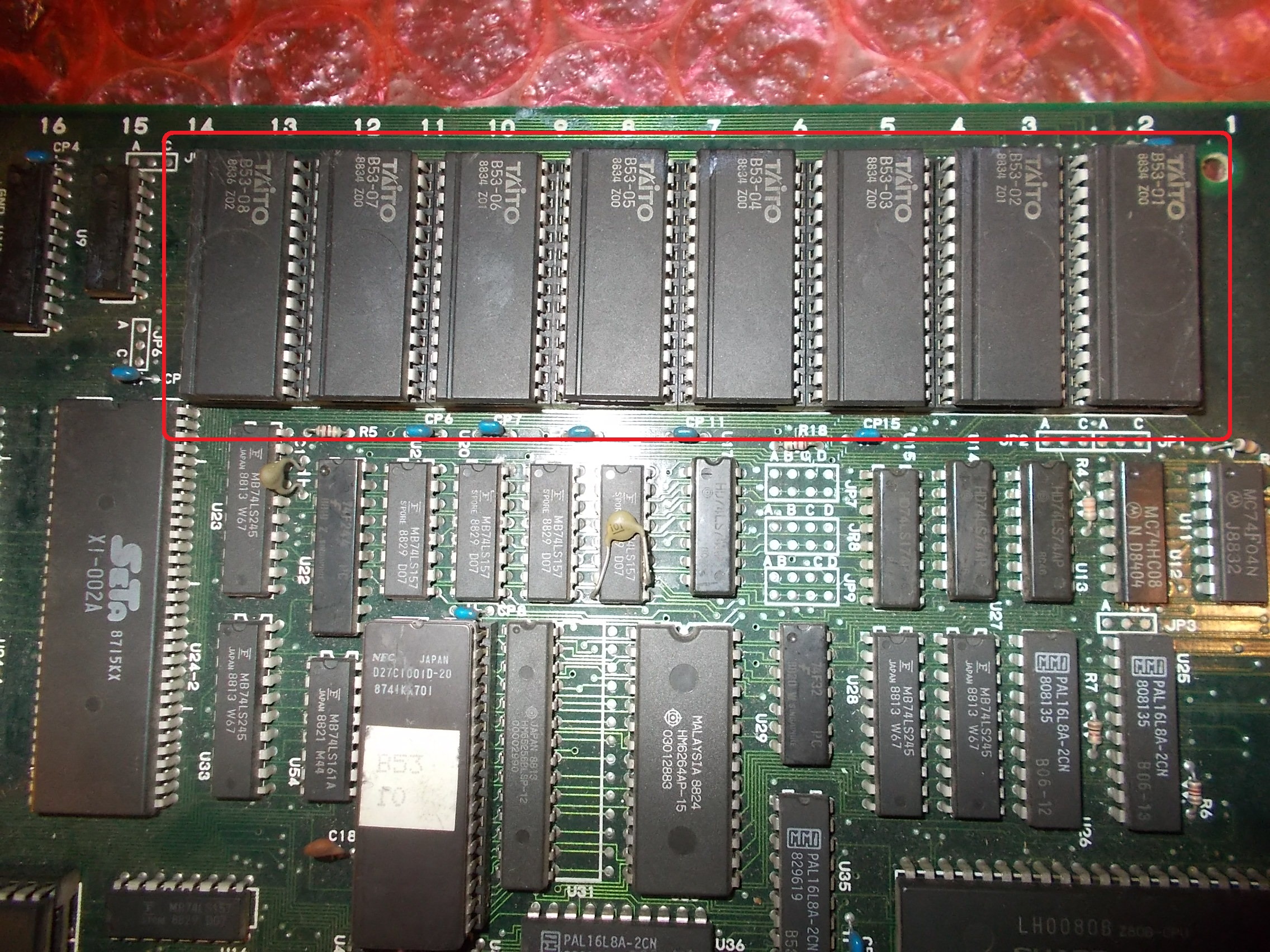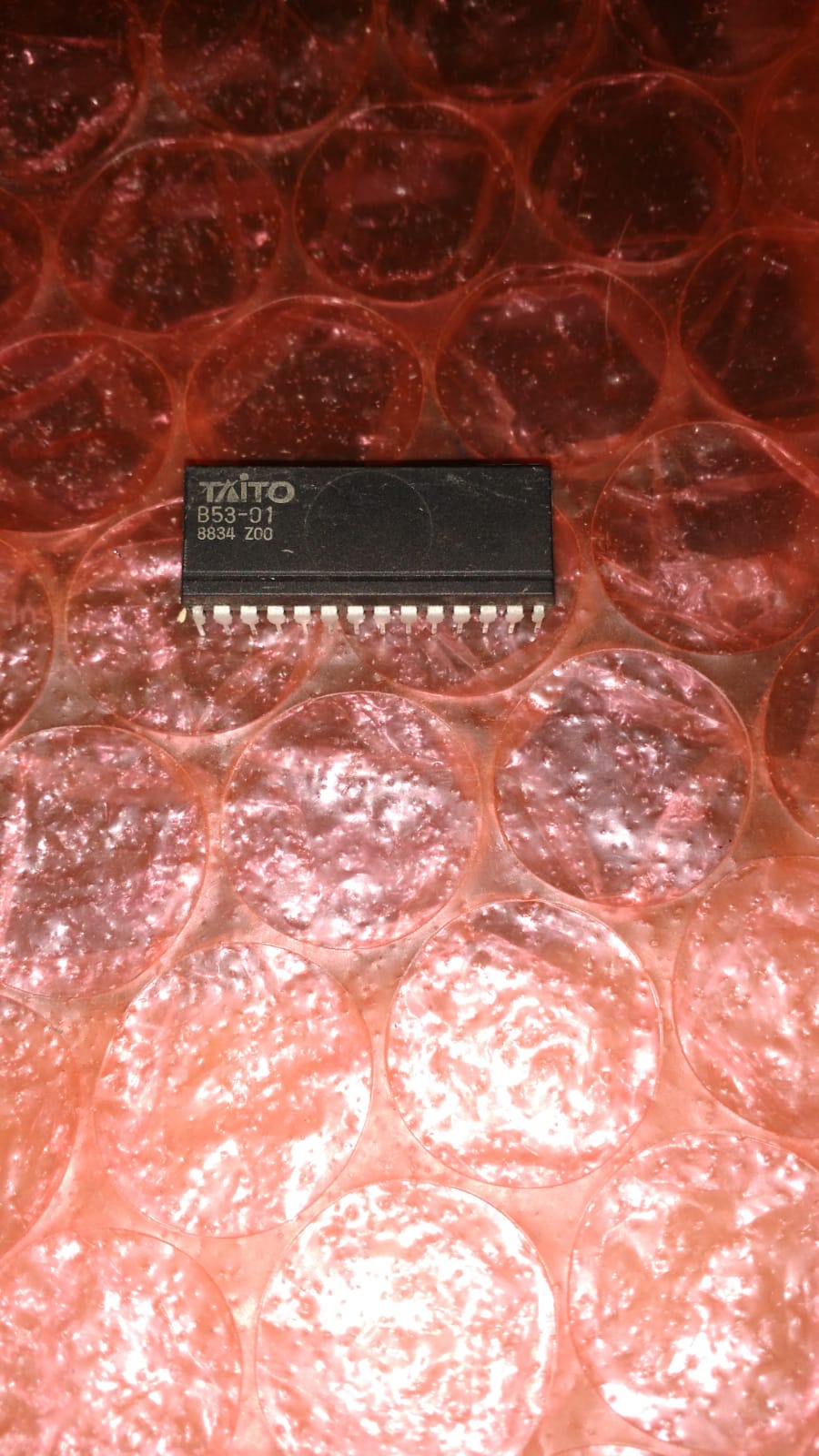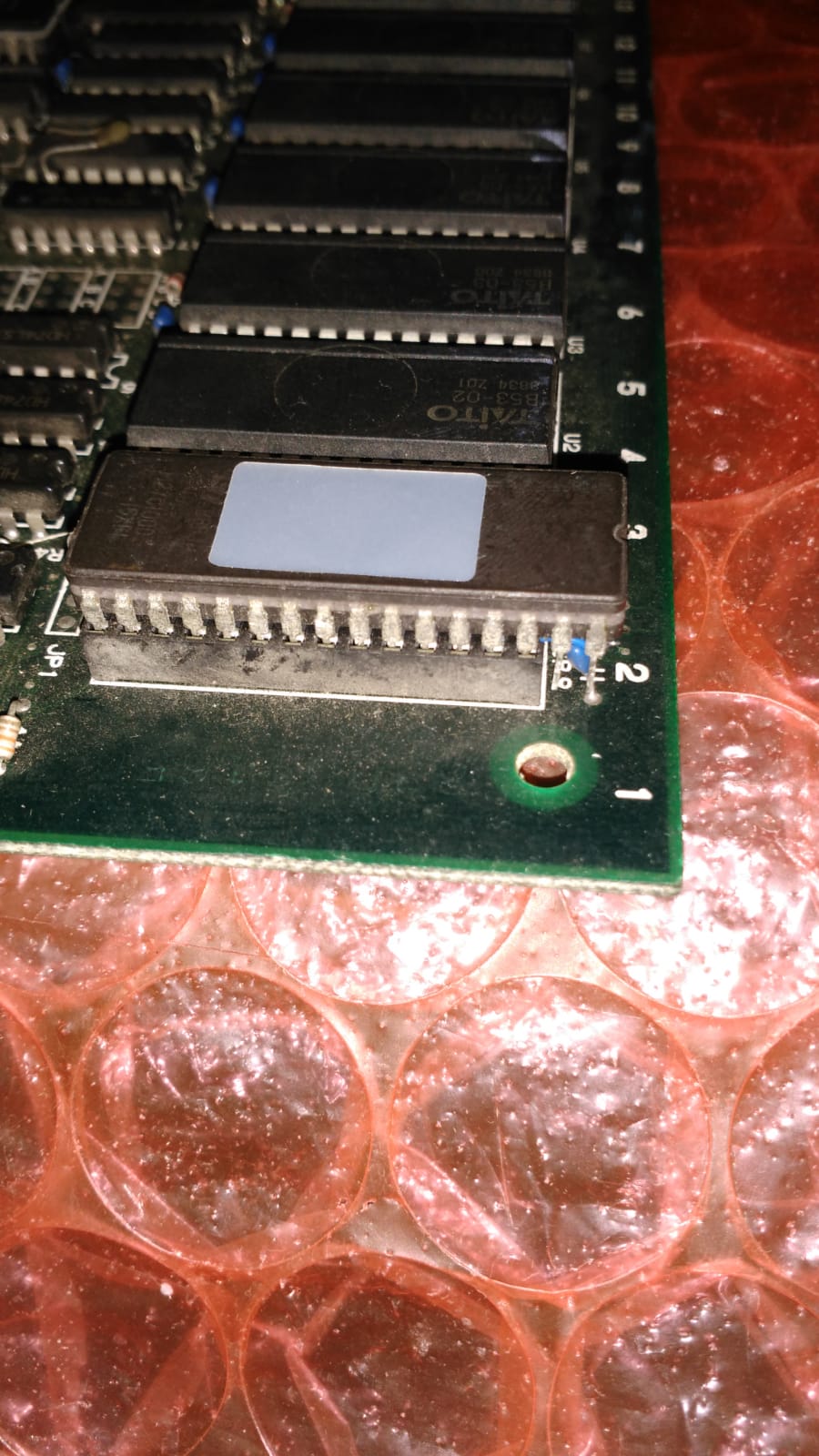I have two Toki pcbs in storage, both with sprite errors. I saw a video from lukemorse1 (who actually inspired me to start repairing arcade pcbs) on youtube where he worked on a Toki pcb, also with sprite errors.
Here’s how the error on board #1 looked like:
So there are blocks surrounding the sprites.
From Luke’s video (https://youtu.be/Czdt_yTNRTs) I identified the area responsible for sprite handling and I quickly found a 74LS273 with a stuck output at pin 19:
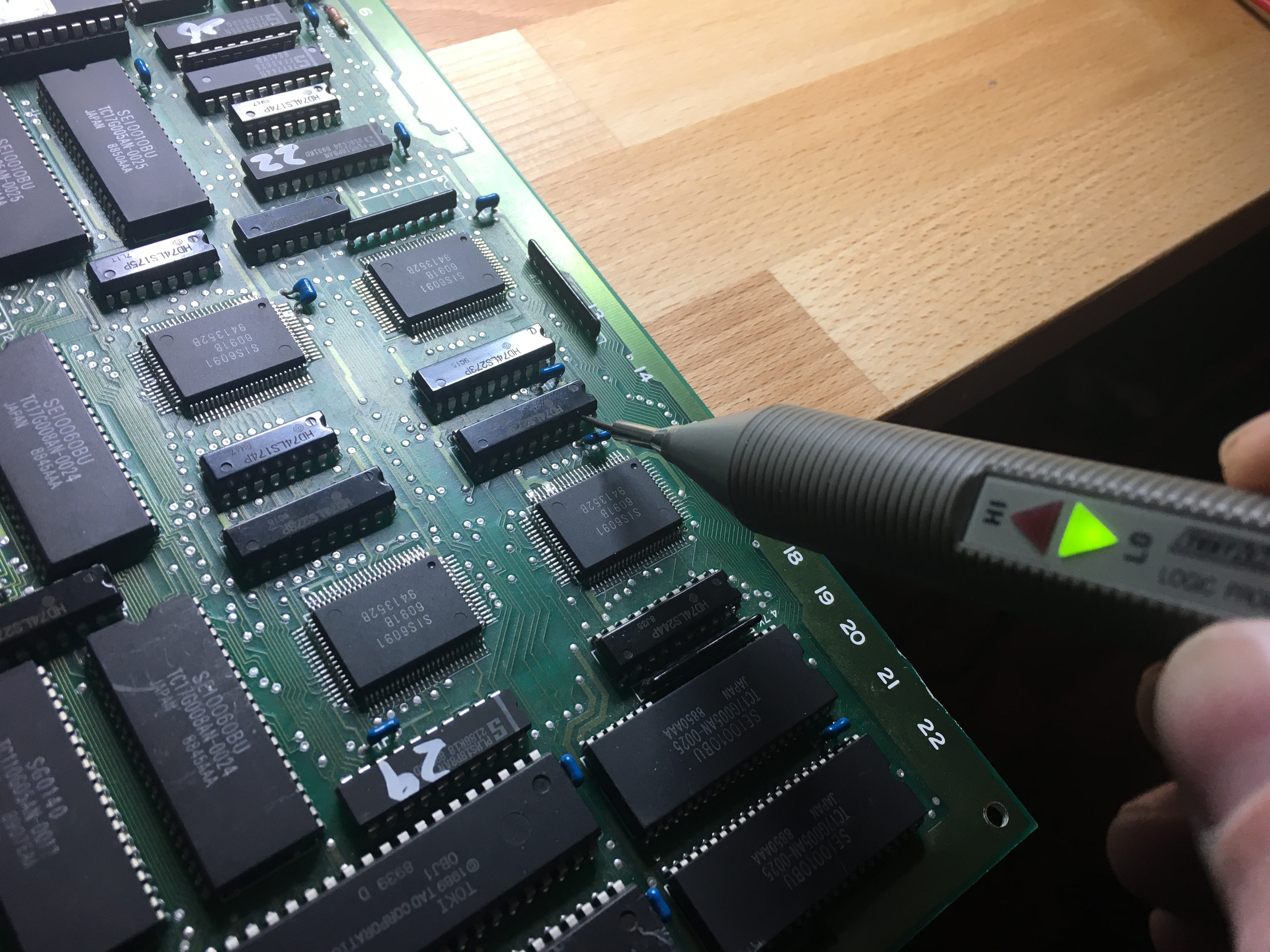
Checking with the multimeter, I found that this pin was almost shorted to ground:
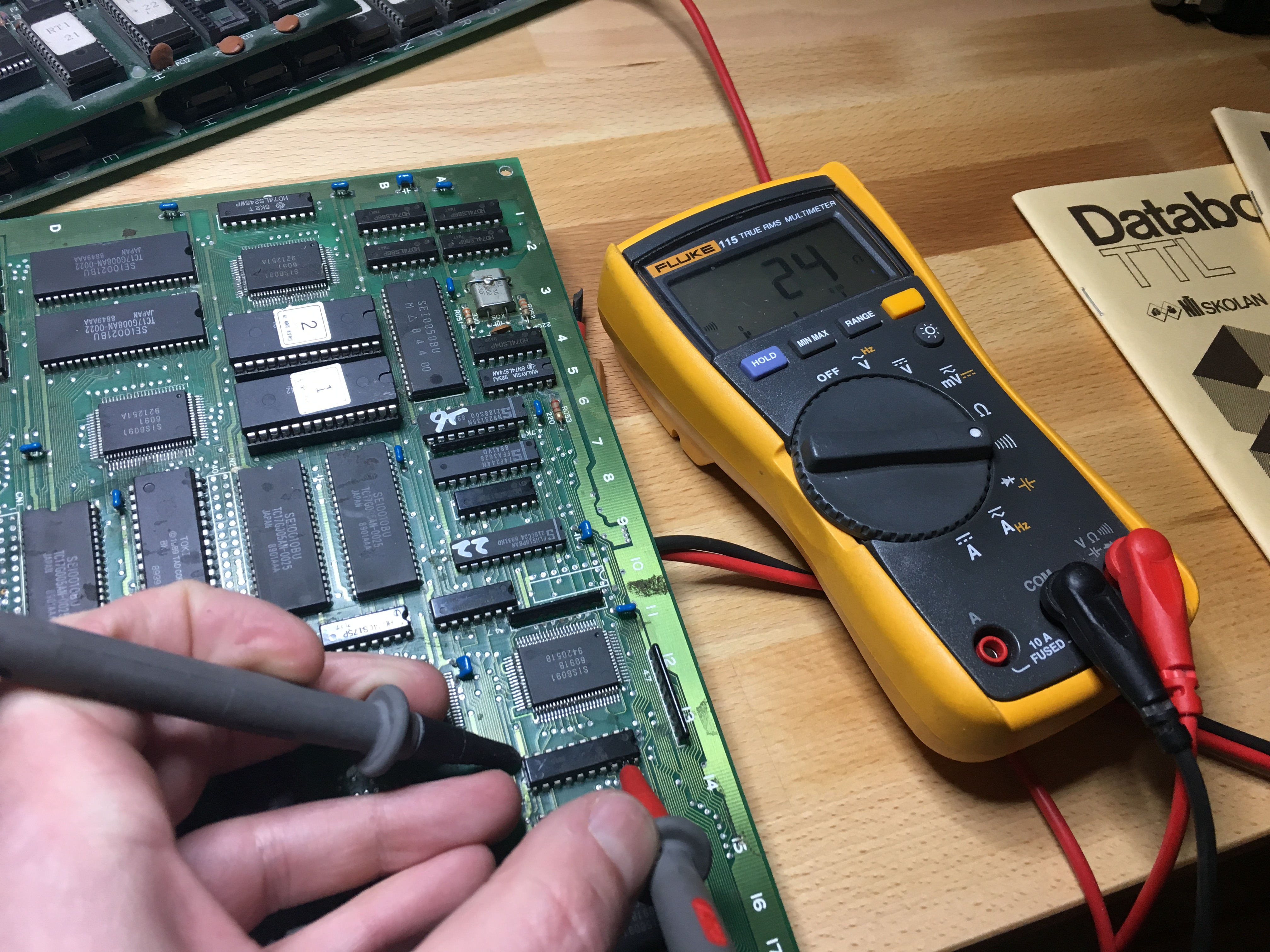
I quickly desoldered the IC and tested it with my VP-398
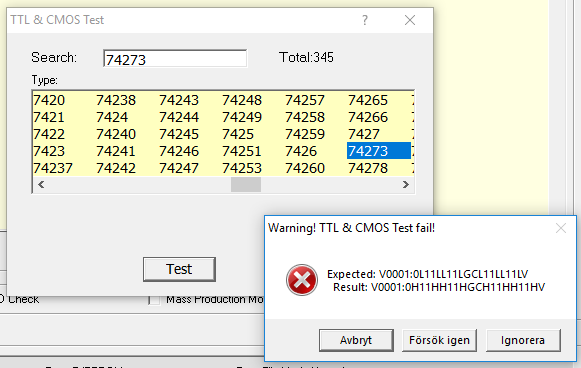
Replacing it with a working 74LS273 made the sprites appear as they should:
So a big thanks to lukemorse1 and also as always to caius for always helping out 🙂


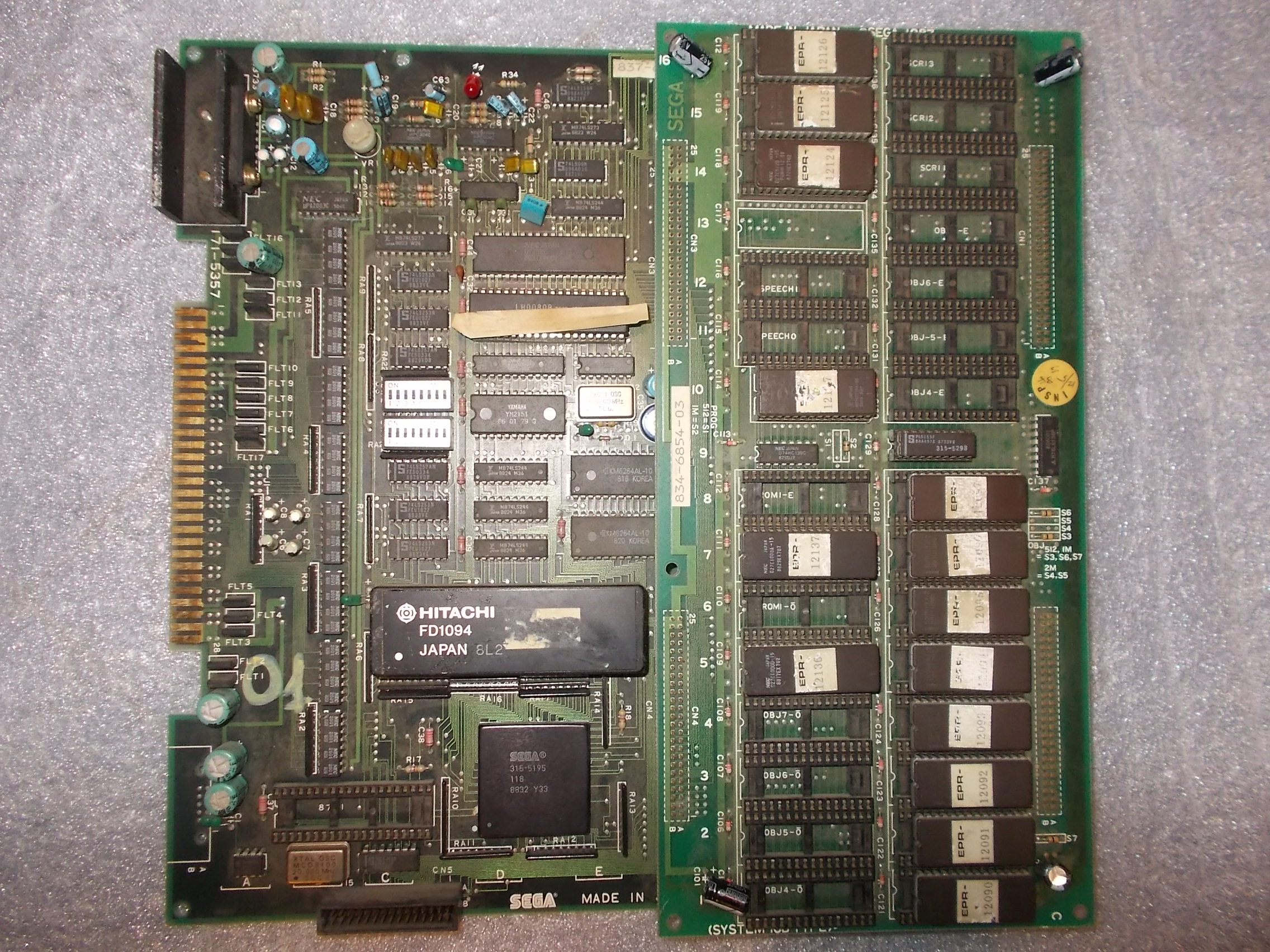
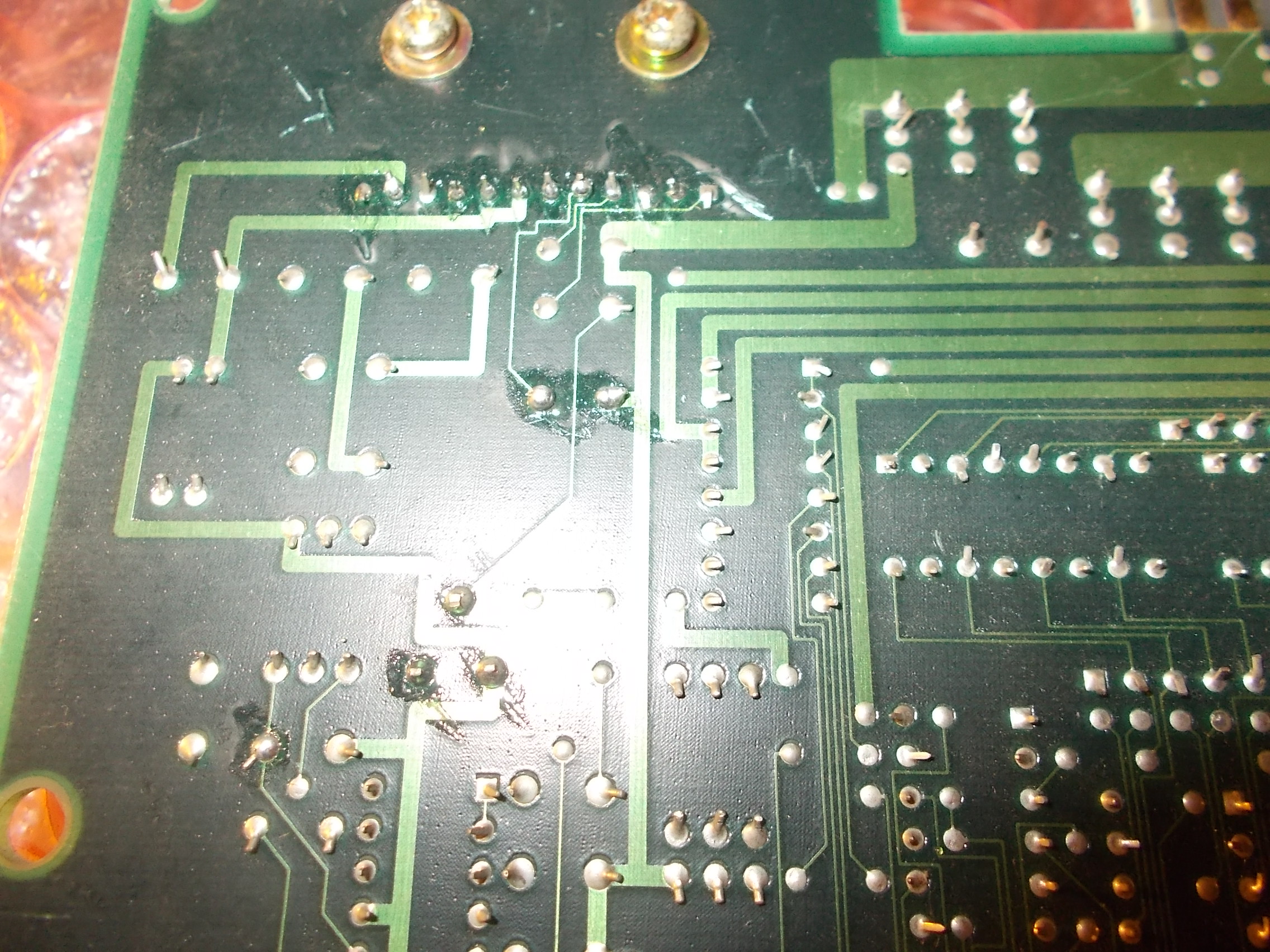
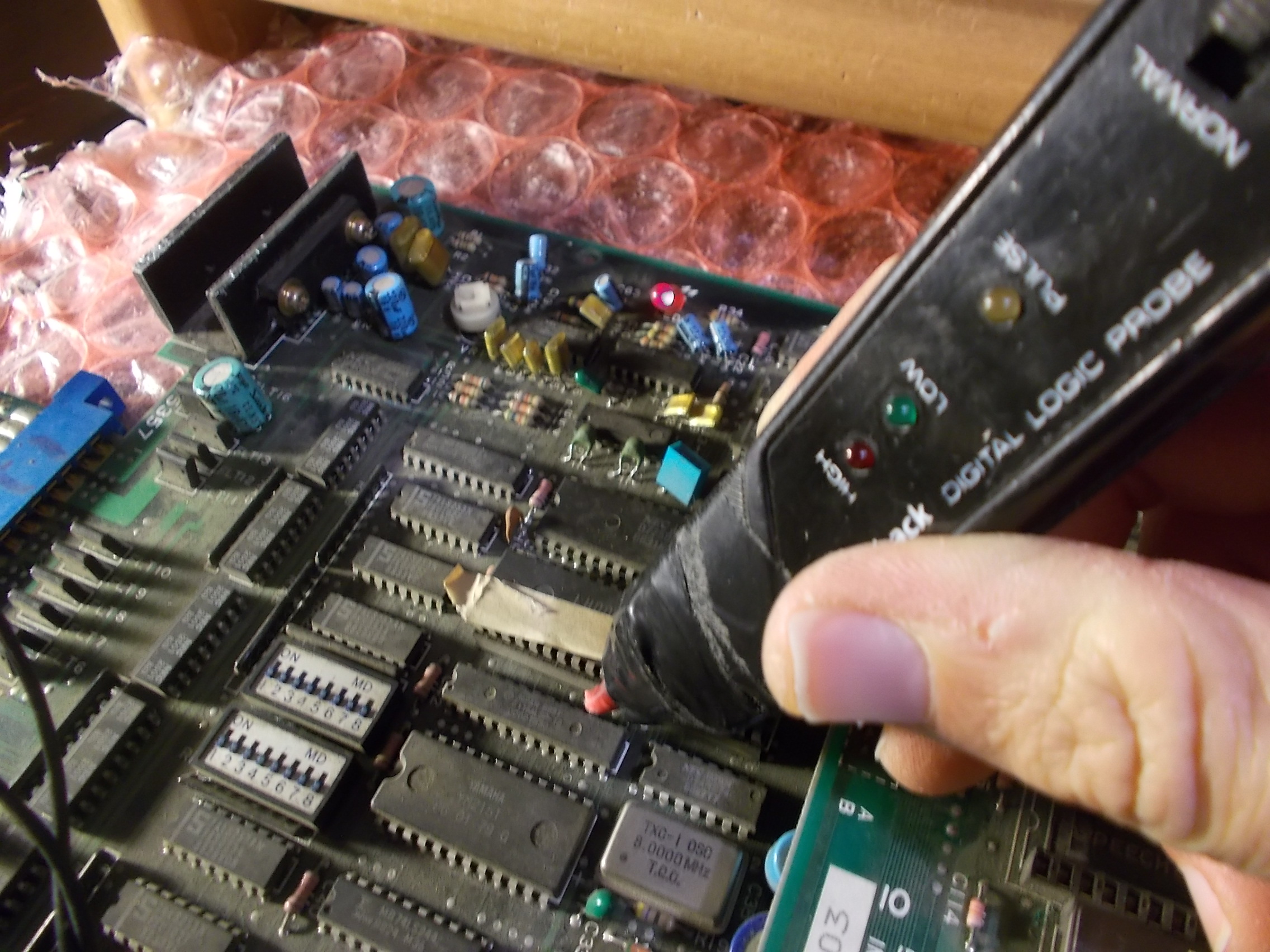
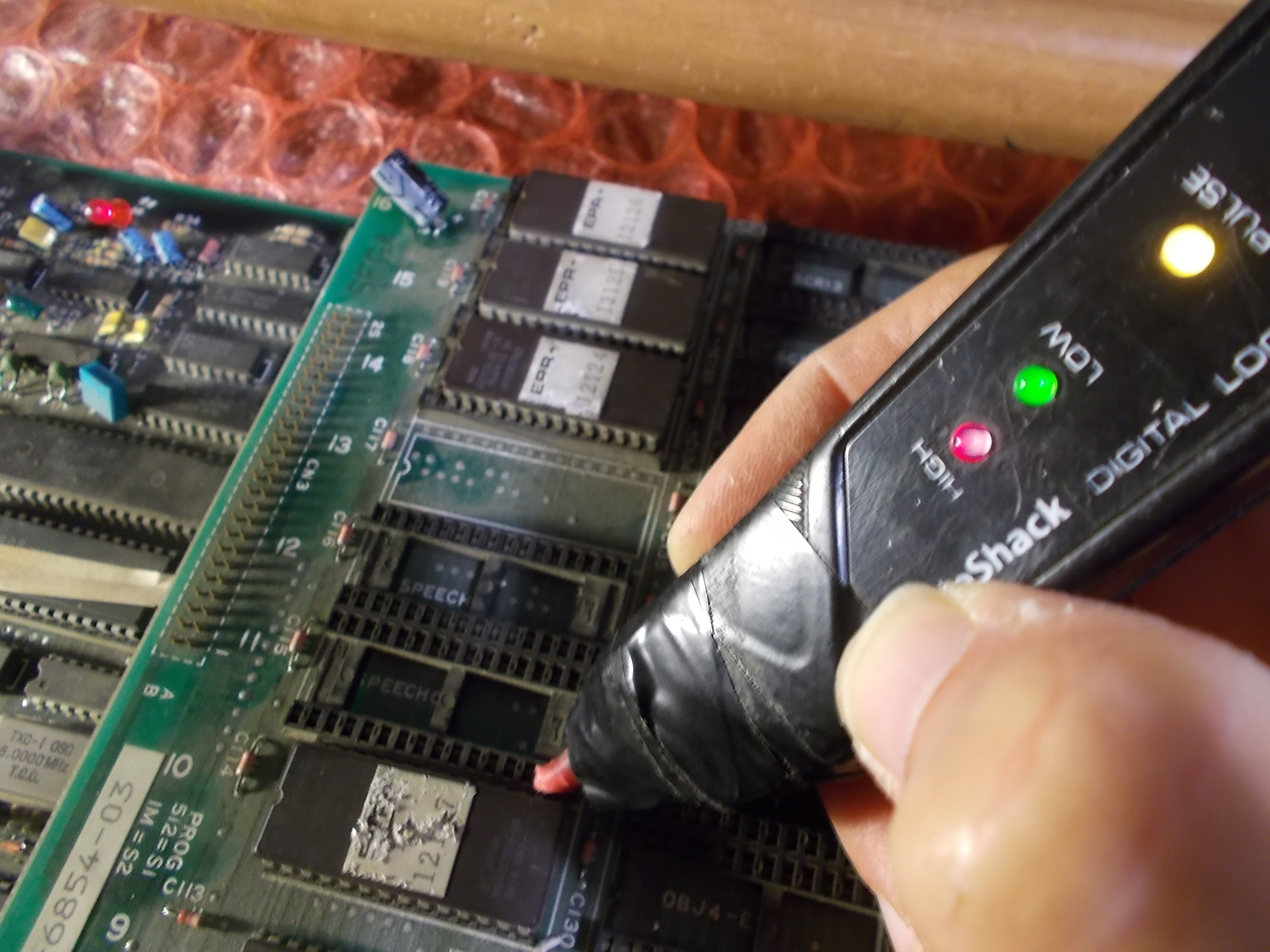 There was clearly a broken trace somewhere so I run a jumper wire from the RAM to the ROM:
There was clearly a broken trace somewhere so I run a jumper wire from the RAM to the ROM: